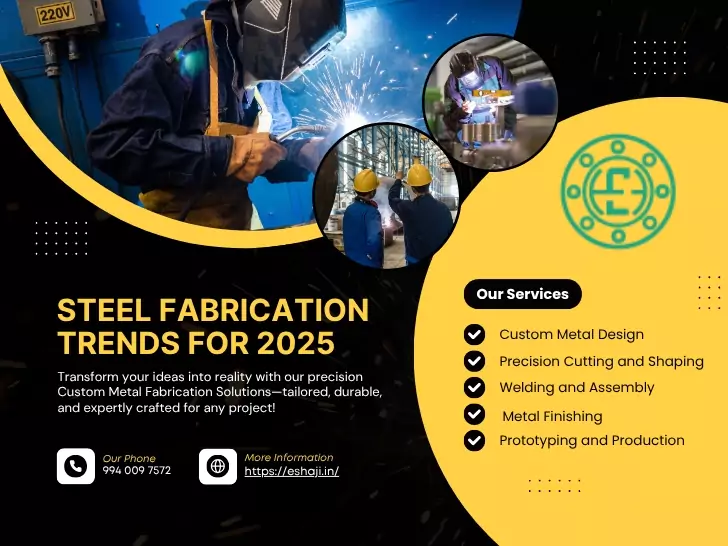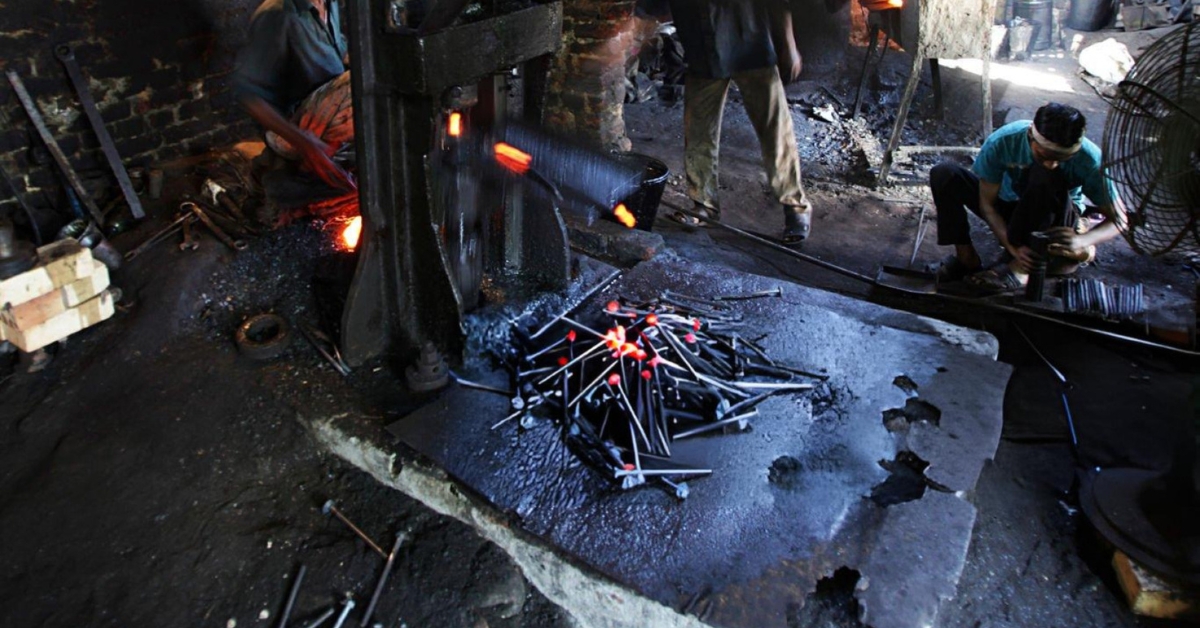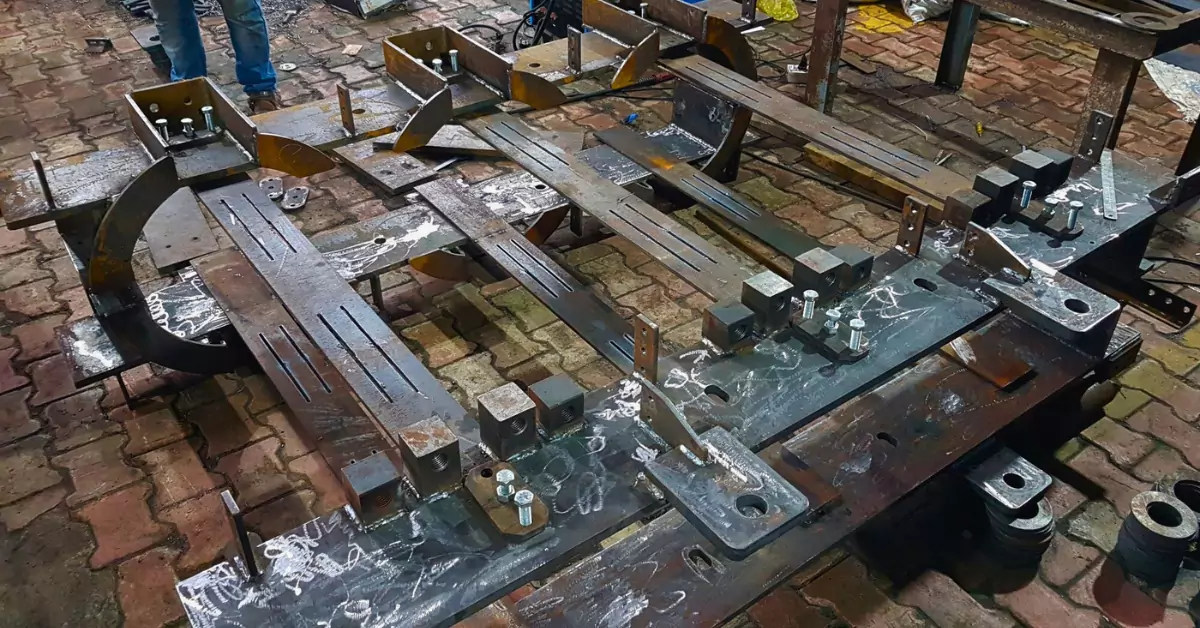Steel Fabrication Trends for 2025: Automation, Quality, & Global Sourcing
The steel fabrication industry stands at a pivotal moment. As we move into 2025, technological advances, environmental pressures, and evolving market demands are reshaping how steel fabrication companies operate. From automated welding systems to sustainable production methods, the industry is experiencing a transformation that promises to redefine efficiency, quality, and environmental responsibility.
Steel fabrication services worldwide are adapting to these changes, with companies investing heavily in new technologies and processes. Whether you’re a manufacturer, contractor, or industry professional, understanding these emerging trends will help you stay competitive and make informed decisions about your steel fabrication needs.
This comprehensive guide explores the five most significant steel fabrication trends that will dominate 2025, offering insights into how these developments will impact the industry and what they mean for your business.
Advanced Automation and Robotics Transform Production
Automation continues to revolutionize steel fabrication, with 2025 marking a significant acceleration in robotic integration across fabrication facilities. Modern steel fabrication companies are implementing sophisticated automated systems that handle everything from cutting and welding to material handling and quality inspection.
Robotic Welding Systems Lead the Charge
Robotic welding has become increasingly sophisticated, with new systems capable of handling complex geometries and multiple welding processes. These automated solutions offer several key advantages:
- Consistent Quality: Robotic systems eliminate human error and variability, ensuring each weld meets exact specifications
- Increased Speed: Automated welding can operate continuously, significantly reducing production times
- Enhanced Safety: Robots handle dangerous tasks, reducing workplace injuries and exposure to hazardous conditions
- Cost Efficiency: While initial investment is substantial, long-term operational costs decrease dramatically
Smart Material Handling Solutions
Automated material handling systems are becoming standard in modern fabrication facilities. These systems use sensors, conveyor systems, and robotic arms to move materials efficiently throughout the production process. The result is reduced manual labor, fewer material handling errors, and improved workflow optimization.
Quality Control Through AI
Artificial intelligence is transforming quality control processes in steel fabrication. AI-powered inspection systems can detect defects, measure tolerances, and ensure compliance with specifications more accurately than traditional methods. This technology reduces waste, improves product quality, and accelerates delivery times.
Sustainable and Eco-Friendly Practices Drive Industry Evolution
Environmental consciousness is no longer optional in steel fabrication. Companies are implementing comprehensive sustainability strategies that address energy consumption, waste reduction, and carbon footprint minimization.
- Energy-Efficient Production Methods: Steel fabrication companies are investing in energy-efficient equipment and processes to reduce their environmental impact. LED lighting, variable frequency drives, and energy recovery systems are becoming standard features in modern fabrication facilities. These improvements not only reduce environmental impact but also lower operational costs significantly.
- Waste Reduction and Recycling Programs: Advanced nesting software and precision cutting technologies are minimizing material waste during fabrication. Companies are also implementing comprehensive recycling programs for steel scraps and offcuts. Some facilities achieve waste reduction rates of over 90% through optimized cutting patterns and material reuse strategies.
- Green Certifications and Standards: Many steel fabrication services now pursue environmental certifications such as LEED compliance and ISO 14001 certification. These standards require companies to implement environmental management systems and continuously improve their sustainability performance.
- Renewable Energy Integration: Fabrication facilities are increasingly incorporating renewable energy sources, particularly solar panels and wind power, to reduce dependence on traditional energy sources. This shift not only reduces environmental impact but also provides long-term cost savings and energy independence.
BIM Integration Enhances Collaboration and Precision
Building Information Modeling (BIM) integration is transforming how steel fabrication projects are planned, executed, and managed. This technology creates a digital representation of the entire project, enabling better coordination between all stakeholders.
Improved Design Coordination: BIM technology allows architects, engineers, and fabricators to collaborate more effectively during the design phase. Potential conflicts and issues can be identified and resolved before fabrication begins, reducing costly changes and delays during construction.
Enhanced Fabrication Planning: Steel fabrication companies use BIM data to optimize their production processes. The detailed 3D models provide precise dimensions, specifications, and assembly instructions, reducing errors and improving efficiency throughout the fabrication process.
Real-Time Project Tracking: BIM integration enables real-time project tracking and progress monitoring. Clients can access up-to-date information about their project status, delivery schedules, and quality metrics through integrated project management systems.
Streamlined Documentation: BIM systems automatically generate detailed drawings, material lists, and fabrication instructions directly from the 3D model. This automation reduces documentation time and ensures accuracy across all project documents.
High-Strength Steel and Material Innovation
Material science advances are creating new opportunities in steel fabrication. High-strength steels and innovative alloys are enabling lighter, stronger, and more durable structures.
Advanced High-Strength Steel (AHSS): AHSS offers superior strength-to-weight ratios compared to traditional steel grades. These materials allow fabricators to create lighter structures without compromising strength or durability. The automotive and aerospace industries are driving significant demand for AHSS applications.
Weathering Steel Applications: Weathering steel, also known as Corten steel, is gaining popularity for architectural applications. This material forms a protective rust layer that eliminates the need for traditional painting and maintenance, reducing long-term costs and environmental impact.
Composite Steel Solutions: Hybrid materials combining steel with other materials such as carbon fiber or aluminum are opening new possibilities in fabrication. These composite solutions offer unique properties that traditional steel cannot achieve alone.
Specialized Coatings and Treatments: Advanced coating technologies are extending the lifespan and performance of fabricated steel products. Zinc-rich coatings, thermal spray applications, and specialized paints provide enhanced corrosion resistance and durability.
Customization and On-Demand Fabrication Meet Market Demands
The trend toward customization and on-demand fabrication is reshaping how steel fabrication services operate. Clients increasingly demand unique solutions tailored to their specific requirements.
Flexible Manufacturing Systems: Modern fabrication facilities are implementing flexible manufacturing systems that can quickly adapt to different project requirements. These systems allow companies to handle small custom orders efficiently while maintaining the capacity for large-scale production.
Digital Order Management: Online platforms and digital order management systems are streamlining the customer experience. Clients can submit specifications, track progress, and communicate with fabricators through integrated digital platforms.
Rapid Prototyping Capabilities: 3D printing and rapid prototyping technologies are being integrated into steel fabrication workflows. These capabilities allow companies to create prototypes and test designs before full-scale production, reducing development time and costs.
Just-in-Time Delivery: Supply chain optimization and advanced logistics planning enable just-in-time delivery of fabricated components. This approach reduces inventory costs for clients while ensuring materials arrive precisely when needed for construction or assembly.
The Future of Steel Fabrication is Here
The steel fabrication industry is experiencing unprecedented transformation driven by technological innovation, environmental responsibility, and evolving market demands. Companies that embrace these trends will position themselves for success in an increasingly competitive marketplace.
Advanced automation and robotics are improving efficiency and quality while reducing costs. Sustainable practices are becoming essential for regulatory compliance and market competitiveness. BIM integration is enhancing collaboration and precision across all project phases. Material innovations are opening new possibilities for strength, durability, and performance. Customization and on-demand fabrication are meeting the unique needs of modern clients.
For steel fabrication companies in India and worldwide, adapting to these trends is not optional—it’s essential for survival and growth. Companies like E S HAJI & CO. that invest in these technologies and practices will lead the industry forward, delivering superior value to their clients while contributing to a more sustainable and efficient future.
The key to success lies in strategic planning, continuous learning, and gradual implementation of these trends. Start by assessing your current capabilities, identifying areas for improvement, and developing a roadmap for incorporating these innovations into your operations. The future of steel fabrication is bright for those ready to embrace change and innovation.



